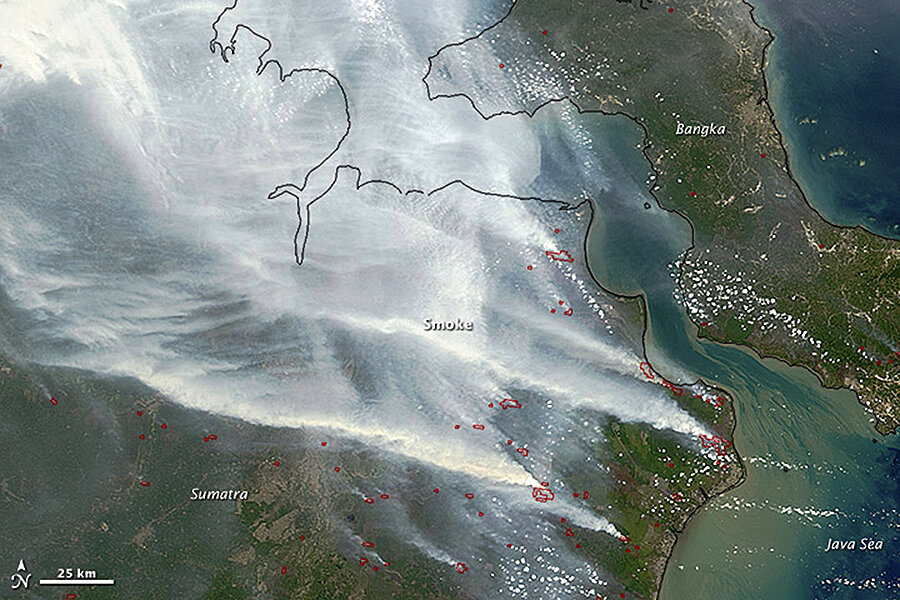Indonesia's dry-season forest fires could be worst on record, says NASA
When Indonesian President Joko Widodo flew to Sumatra last week to check on the raging forest fires that have engulfed much of the island, the smoke was so thick his plane couldn’t land.
He was instead forced to fly back to the capital Jakarta, reports Bloomberg News.
For weeks, Malaysia, Singapore, and large parts of Indonesia have suffered from choking smoke generated by the fires, and tens of thousands of people have sought medical treatment for respiratory problems.
Forest fires have been a seasonal hazard for the past two decades, largely as the result of practices in the palm-oil industry. But this year's prolonged dry season, exacerbated by El Nino, has hampered efforts to extinguish the flames. Many of the fires have been started illegally to make room for palm oil plantations on ground once covered in dense forests and peat.
NASA warned this week that the haze blanketing Southeast Asia may become among the worst on record. Scientists predict that the current outbreak could surpass 1997 levels, when dry conditions and out-of-control fires released record levels of air pollution and greenhouse gases. The fires that year led to an estimated $9 billion in damages, according to Agence France Presse.
“Conditions in Singapore and southeastern Sumatra are tracking close to 1997,” Robert Field, a Columbia University scientist based at NASA’s Goddard Institute for Space Studies, said in a statement. “If the forecasts for a longer dry season hold, this suggests 2015 will rank among the most severe events on record.”
While the fires are an annual point of tension between Indonesia and its neighbors, the worsening conditions this year threaten to sour relations even further than usual. Indonesia says it has deployed more than 20,000 troops and other personnel to help fight the fires. But Singapore and Malaysia say much more needs to be done to get them under control – and to prevent future recurrences.
In the meantime, authorities are hoping much-needed rains will arrive within a month. Indonesia’s disaster agency said Thursday that the fires could be extinguished by November. But as AFP reports:
It could be too little too late in Malaysia, where farmers have complained of poor yields due to the haze, and in Singapore where the government has launched legal action against companies blamed for farm and plantation fires …
Authorities worry air quality in Singapore, which improved Friday to the lower end of the “unhealthy” range after heavy rains overnight, could worsen again depending on the wind direction from Sumatra.
In Malaysia, where weeks of fog-like white-gray smoke has forced repeated large-scale school closures out of health concerns, there's fears the prolonged dry season could spark fires in Malaysia, compounding the disaster.
In addition to deploying soldiers to help fight the blazes, President Widodo has threatened to punish palm oil and other plantation companies who started them. He insists that he just needs time to tackle the problem.
"You will see results soon and in three years we will have solved this," Widodo said in an interview with the BBC earlier this week.







